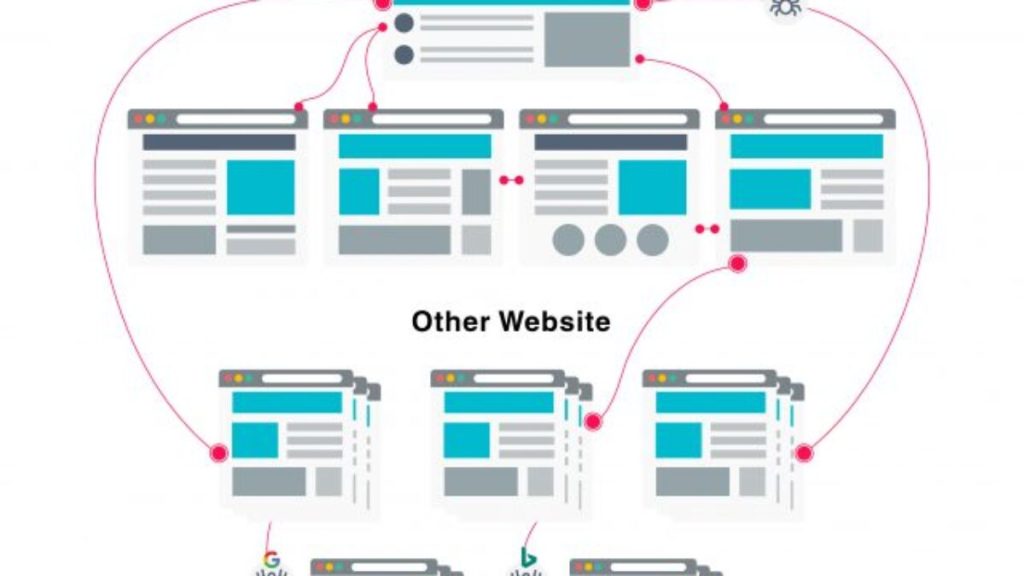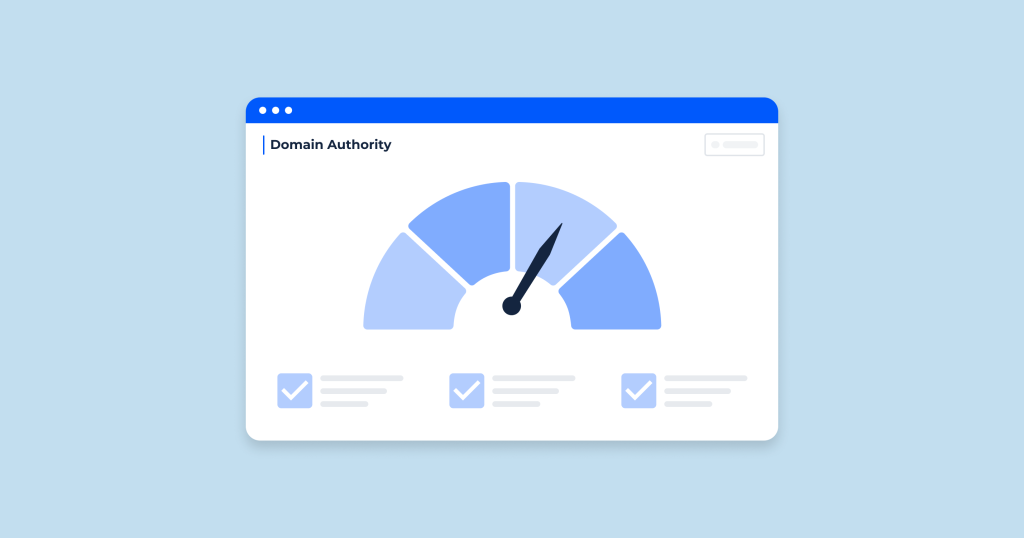If you’re looking to earn high-quality backlinks and boost your site’s authority, you’re in the right place. This guide is packed with practical strategies you can start using right away.
Let’s get started!
Also Read: What Is SEO – Search Engine Optimization?
What Is Link Building in SEO?

Link building is a key part of SEO that focuses on getting other websites to link back to yours.
Search engines like Google often view these inbound links as indicators of credibility and authority, which can contribute to better rankings in organic search results.
In essence, Google treats some backlinks as endorsements. When your site earns links from high-authority domains, it signals trustworthiness to Google.
For example, according to data from Semrush’s Backlink Analytics tool, bbc.co.uk has earned backlinks from over a million domains including well-known sources like cdc.gov, microsoft.com, and britannica.com.
This extensive backlink profile plays a role in how Google ranks bbc.co.uk in search results, reinforcing its visibility for relevant keywords.
While backlinks aren’t the only factor in Google’s algorithm, they are highly influential. In fact, studies have shown that 8 of the top 20 ranking signals are related to backlinks.
Although some links may come naturally over time, intentionally building strong backlinks can help ensure your site stays competitive especially when those links come from reputable and relevant sources.
Factors That Determine the Quality of a Backlink
Some backlinks can significantly improve your SEO, while others may have little to no impact or even cause harm if they come from spammy or low-quality sources (often referred to as toxic backlinks).
Let’s explore the key factors that determine the value of a backlink:
1. Website Authority

Backlinks from trusted, high-authority websites tend to carry more weight in SEO. For instance, getting a link from bbc.co.uk is likely to benefit your site far more than a link from an unknown personal blog.
Tools like Semrush use a metric called Authority Score (AS) which ranges from 0 to 100 to evaluate a site’s influence. This score is based on:
- Backlink strength: The quality and quantity of links pointing to the site
- Organic traffic: The site’s estimated search-driven traffic
- Backlink health: Whether the site’s backlink profile appears natural and spam-free
When using tools like Semrush’s Link Building Tool, you’ll find each prospect’s Authority Score under the “AS” column.
While getting links from top-authority sites is valuable, a healthy backlink profile also includes links from smaller or lower-authority websites. Even sites with lower AS can still contribute positively especially when the links are relevant.
2. Relevance of the Linking Site and Content
Links from websites within your niche are generally more impactful because they suggest topical trust. Search engines give more value to backlinks that come from related industries or subjects.
The context of the link matters too. A link embedded in relevant content is much more powerful than one placed randomly.
Example:
If you sell basketball shoes, consider these hypothetical backlinks:
- A gardening site mentioning you in a post about soil (low relevance)
- A fitness blog linking to you in a cardio workout post (moderate relevance)
- A sports website listing your shoes in a “Top Basketball Shoes” guide (highly relevant and valuable)
3. Link Placement on the Page
Where the link appears on a webpage also matters. Google’s reasonable surfer model suggests that users are more likely to click certain links based on placement.
Generally, links placed in the main content of a page (especially near the top) hold more value than those in sidebars or footers. A link embedded in a well-written paragraph tends to pass more SEO value.
4. Anchor Text
The anchor text (the clickable text in a hyperlink) helps search engines understand what the linked page is about.
For example:
A link with anchor text “basketball shoes” is more SEO-friendly than one that simply says “click here.”
However, anchor text must sound natural within the content. Over-optimized or keyword-stuffed anchors can appear manipulative and may lead to ranking penalties.
To audit your anchor texts, tools like Semrush’s Backlink Analytics let you explore which phrases are commonly used to link to your site.
5. Link Attributes: Nofollow, Sponsored & UGC
Some links include attributes that tell search engines how to treat them. These attributes typically signal that the link shouldn’t influence search rankings.
Here’s a breakdown:
| Attribute | Meaning |
|---|---|
rel="nofollow" | Used when the linking site doesn’t want to vouch for the linked page |
rel="sponsored" | Indicates a paid or sponsored link |
rel="ugc" | Marks links generated by users, like in blog comments or forums |
These links can still send referral traffic or build brand awareness, but they usually don’t impact rankings.
Example of a nofollow link in HTML:
htmlCopyEdit<a href="https://example.com" rel="nofollow">Anchor Text</a>
Links that don’t contain any of these attributes are often called “dofollow” links. These are the ones that typically carry SEO value and can help improve your rankings.
Also Read: On-Page SEO Explained: Meaning and Best Practices
Smart and Risky Link Building: What to Do—and What to Avoid
There are many ways to build backlinks, but not all strategies are equally effective (or safe). Below are four common methods, with a breakdown of how each one works and what to watch out for.
1. Earn Backlinks Naturally
Earning backlinks means other websites choose to link to your content voluntarily without you asking. This is one of the safest and most effective link building methods because it aligns well with Google’s quality guidelines.
To encourage natural backlinks, create “link-worthy” content, often referred to as link bait. This can include:
- Visual resources like infographics and charts
- Original research, surveys, or unique data
- Interactive tools or calculators
- Comprehensive tutorials or how-to guides
To discover which pages on your site (or a competitor’s) attract the most backlinks, tools like Semrush’s Backlink Analytics can help. Use the Indexed Pages report to see:
- The number of unique domains linking to each page
- A preview of the page’s content
- The exact sources of those backlinks
2. Request Backlinks (Outreach Strategy)
This method involves reaching out directly to site owners or content managers to suggest they link to your content. You’ll have a better chance of success if:
- Your content adds genuine value to their readers
- You’re being credited for useful contributions
Platforms like Semrush offer a Link Building Tool that helps identify potential backlink opportunities by analyzing your competitors and target keywords.
Once you’ve set up a campaign, you can review suggested prospects, choose which to contact, and track your outreach progress all in one place.
3. Add Links Manually (Use With Caution)
Adding your links to external websites by yourself such as in directories, forum threads, or social media profiles typically doesn’t carry much SEO weight. Google often disregards these links, especially if they appear self-promotional.
Common places for manual links include:
- Business directories
- Q&A platforms (like Quora)
- Online forums and communities
- Blog comment sections
- Profile bios on websites
While these links can help users discover your content, avoid spamming. If overdone, they can damage your reputation or even result in penalties under Google’s spam policies.
4. Buying Links (Proceed With Extreme Caution)
Paying for backlinks in an attempt to boost search rankings directly is a major violation of Google’s link spam rules.
If you do pay for placements, the link must include attributes like rel="sponsored" or rel="nofollow" which tell search engines not to consider them for ranking purposes.
Buying links without these qualifiers can result in penalties or cause Google to devalue the link entirely.
You can hire an agency or freelancer to help with your link building strategy, but make sure they’re using ethical, white-hat tactics and never pay individual sites directly just to host a “dofollow” link.
Also Read: Understanding Off-Page SEO: Best Practices & Winning Strategies
9 Powerful Strategies for Earning Quality Backlinks
Looking to boost your site’s authority with credible backlinks? Below are nine proven techniques to help you secure valuable links the right way.
1. Reach Out via Email
One of the most effective ways to earn backlinks is by contacting website owners directly and asking them to link to your content. Even great content needs promotion to get noticed.
You can use tools like Semrush’s Link Building Tool to identify potential websites to contact. Start by setting up a project, entering your domain, and listing keywords relevant to the content you’re trying to promote.
Once the tool identifies possible linking domains, review and select relevant prospects. You can then reach out to them using personalized email templates through the platform.
Remember to tailor each message to the specific prospect. After sending, the tool can track email status such as opened, clicked, or replied. When a backlink is secured, mark it to monitor your progress.
2. Position Yourself as a Source
Journalists and content creators often seek expert opinions or unique insights. By contributing your knowledge, you may earn a backlink when your input is published.
Platforms like Connectively (previously HARO) connect experts with media outlets looking for sources. You can also explore social media by searching hashtags like #JournoRequest to find journalists actively seeking quotes.
Responding to relevant queries with thoughtful pitches can result in backlinks from authoritative publications.
3. Fix Broken Links with Your Content
Broken link building involves finding links on other websites that lead to non-functioning pages, then suggesting your content as a suitable replacement.
Start by analyzing competitor domains using SEO tools. Look for broken pages that previously had several links pointing to them. If you have a similar resource that could replace the broken page, reach out to those linking websites with a polite suggestion.
This method helps site owners fix their content while providing you with a backlink opportunity.
4. Publish Link-Worthy Content
Certain types of content are more likely to attract backlinks on their own. These include:
- Original research or industry studies
- Online tools and calculators
- Visual content like charts or infographics
- Long-form, in-depth guides or tutorials
Aim to create content that fills gaps in your niche or provides unique value. As others cite your work, your backlink profile will naturally grow.
5. Claim Unlinked Brand Mentions
Sometimes websites mention your brand but forget to link to your site. You can turn these mentions into backlinks simply by reaching out and asking.
Use brand monitoring tools to track online mentions of your business or name. Filter the results to find mentions that aren’t currently linked. Then, contact the author or webmaster and request that they include a backlink.
Most are happy to make the change especially if your brand was referenced positively.
6. Study Competitor Backlinks
Analyzing the backlinks of competitors can reveal what types of content attract links and which websites are most likely to link in your niche.
Use backlink analysis tools to identify high-performing pages on competitor sites. Look for patterns such as frequent use of certain content formats or topics. This can guide your own content strategy and help you target similar linking domains.
7. Recover Lost Links
If you’ve ever had a backlink removed, it might be easier to recover it than build a new one. Links can disappear for various reasons such as deleted content, updated pages, or broken URLs.
Audit your backlink profile to find links that have recently dropped off. Once identified, reach out to the linking site and ask if the link can be restored, especially if the page is still active and relevant.
8. Identify Backlink Gaps
A backlink gap analysis helps you find websites that link to your competitors but not to you. If a domain finds your competitor’s content valuable, they may also consider linking to your version especially if it’s more comprehensive or up-to-date.
Use a backlink gap tool to compare your site with several competitors. Focus on domains that link to multiple competitors but exclude you. Reach out with a tailored pitch and relevant content that fills the same need.
9. Use Digital PR to Attract Coverage
Digital PR is about earning media attention through engaging campaigns or unique stories. When done well, these stories often earn backlinks from media sites and blogs.
For instance, a company might create a data-driven campaign tied to a trending topic or an emotional cause. When media outlets cover the story, they usually include a link back to the brand’s website.
You don’t need a massive PR budget to make this work just creativity, good timing, and a story worth telling.
How to Monitor Your Link Building Progress
To ensure your link building efforts are effective, it’s important to perform regular audits. This helps you stay on top of new backlinks, spot any that have been lost, and identify potentially harmful ones.
Tools like Semrush’s Backlink Audit can simplify this process with automated tracking.
Start by accessing the tool’s settings and setting a monthly scan schedule. This will allow the system to automatically check your backlink profile and send you summary reports by email.
In the Overview section of the audit, you can keep an eye on key metrics such as your Authority Score a reflection of your site’s backlink strength. While growth may be gradual, steady increases in this score usually indicate you’re building a healthier backlink profile over time.
Your Link Building Toolkit
If you’re serious about building high-quality backlinks, consider using these essential SEO tools:
- Link Building Tool – Find and manage outreach to potential backlink sources
- Backlink Analytics – Analyze competitor backlinks for inspiration
- Backlink Gap Tool – Discover domains linking to your competitors but not to you
- Backlink Audit Tool – Track progress, monitor changes, and flag toxic backlinks
By regularly monitoring your backlink efforts and using the right tools, you’ll improve your chances of achieving strong, long-term SEO performance.

